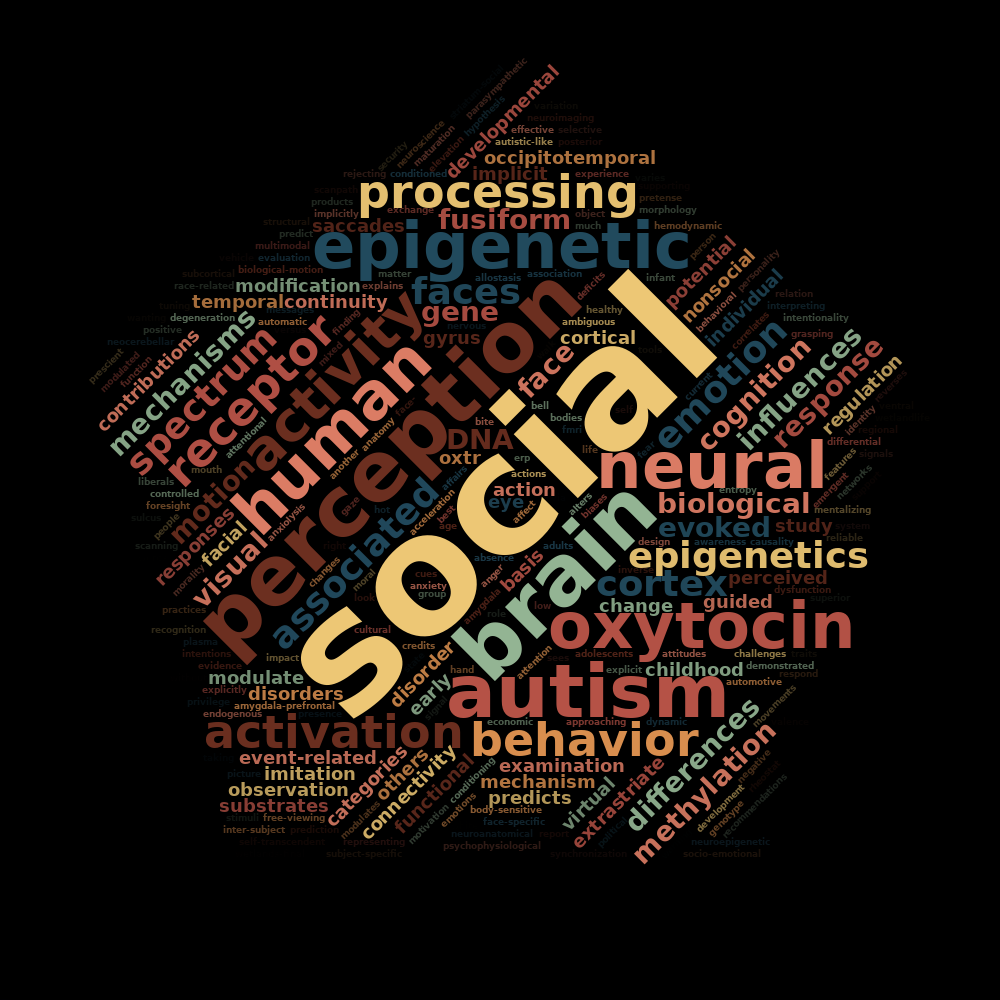Research
 Social interaction is dependent on a collection of perceptual and cognitive skills that develop over a lifetime. Social demands on the human brain are uniquely complex, requiring advanced abilities to recognize, manipulate and respond to socially relevant information, including the ability to construct representations between self and other and to use the representations to flexibly guide our own behavior. The Social Neuroscience Lab at the University of Virginia seeks to characterize neural systems underlying both normal and abnormal forms of social cognition and interpersonal functioning - phenomena that are both highly variable within the broader population and implicated in severely debilitating affective and neurodevelopmental disorders.
Social interaction is dependent on a collection of perceptual and cognitive skills that develop over a lifetime. Social demands on the human brain are uniquely complex, requiring advanced abilities to recognize, manipulate and respond to socially relevant information, including the ability to construct representations between self and other and to use the representations to flexibly guide our own behavior. The Social Neuroscience Lab at the University of Virginia seeks to characterize neural systems underlying both normal and abnormal forms of social cognition and interpersonal functioning - phenomena that are both highly variable within the broader population and implicated in severely debilitating affective and neurodevelopmental disorders.
We take a multimodal approach that includes the use of functional MRI, scalp-recorded event-related potentials, eye-gaze monitoring, genetics, epigenetics, hormonal and behavioral measures. We also take a lifespan approach and have collected data from participants ranging from a few months of age all the way to 80 years old. Current themes in the lab are summarized below.
The role of the epigenetically controlled endogenous oxytocin system on social cognitive development
The neuropeptide oxytocin has long been recognized for its role in development of social function in mammals. Given its role in a broad range of social behaviors in humans, neuroscientists have hypothesized that brain circuits critical for social perception and cognition should be influenced by the actions of oxytocin. When our lab first began, intranasal administration, genetic, and peripheral oxytocin measurement studies all implicated oxytocin in a myriad of social behaviors. However, much of this work was hard to replicate and plagued by measurement issues. Moreover, though genetic candidates were identified, there was no obvious mechanism linking genetic variability with function. Working with our colleague, Jess Connelly, we wrote seminal papers detailing the peripheral measurement of an epigenetic modification to the oxytocin receptor (OXTRm) and how this variability was associated with social perceptual processes. The original project considered the role of oxytocin in core processes of social perception – the perception of animate motion and perception of emotional faces. These first two papers were highly regarded, both of them cited over 100 times within five years of publication. Our work with OXTRm in healthy adults has now been supported by two NSF grants. Work during the period of the second grant has expanded our focus to probe the interplay between attentional control and salience networks during a divided social attention task. Our results suggest that OXTRm is associated with variability in attention networks during selective social attention, which is differentially associated with social information processing across social behavioral phenotypes. This work provides some much-needed directionality of our prior associations, allowing us to make better hypotheses regarding the role of the endogenous oxytocin system in social and cognitive behavior, and highlighting the need to consider both regional activation and functional integration of multiple brain systems. The associations identified in our work have also provided a framework by which we may formulate specific hypotheses regarding the role of the endogenous oxytocin system during development.
Neural activation associated with social perceptual processes can also reflect the developmental experiences of an individual and the environment in which they were raised. This point is hardly a point of contention in model systems neuroscience work, where we now have an appreciation for how developmental factors may modify the epigenome, shape neurodevelopment and influence behaviors across the lifespan. However, most of these types of discoveries in humans have only been described in special populations – Those with poor early life experience or other neurodevelopmental factors that have led to large behavioral differences. My colleagues and I have proposed OXTRm as a model of how epigenetic mechanisms serve as an interface between biological maturation and developmental experience, shaping the developing brain in a bidirectional fashion over ontogeny. Our current work is examining how these processes change over time, identifying which factors in the environment lead to variability in OXTRm and how these processes are disrupted in developmental disorders.
The functional organization of Social Skill in the Human Brain
Most individual difference work in social cognitive neuroscience is predicated on making associations between a measure of social or cognitive function and a summary measure of neural activity from candidate brain regions within a target population. These association studies have been criticized for having low statistical power, poor reliability, and a failure to generalize across samples. We seek to demonstrate that by leveraging unique properties of the human connectome, validated with a predictive framework, we will be able to improve predictive accuracy within multiple domains of social skill.
To achieve our goals, we have adopted an approach whereby we attempt to finely detail behavioral differences among participants, focus on basic social perceptual processes (face recognition, biological motion perception, social attention) and model individual differences in brain connectivity as predicted by our behavioral measures.